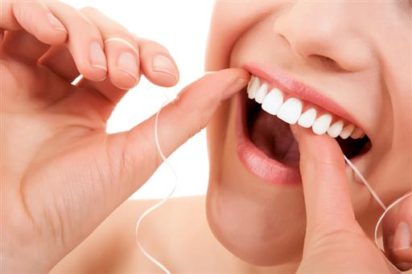There are always lots of questions about your teeth, but there’s always one dreaded question guaranteed, “Have you been flossing regularly?”
As much as we like to mumble out half-lies of “probably last week”, which actually means “I don’t remember”, flossing is super important.
If you don’t believe us, then take a look at the facts.
In 2011, the Australian Institute of Health and Welfare found while many people made a point of brushing their teeth twice a day, far fewer flossed regularly.
Why?
The University of Adelaide said it’s not only time-consuming for people but a difficult skill to master. Yes, flossing isn’t as straight up and down as you thought.
If you’re still sitting on the fence over the real need to floss, other than when your dentist does it for you, then here are three critical reasons.
Floss acts as an ‘interdental cleaner’.
If you’re unsure of what an ‘interdental cleaner’ is, don’t worry – you’re not alone.
A toothbrush only cleans the top and outer surfaces of the teeth and gums, whereas floss acts as an interdental cleaner to clean the tight spaces between the teeth and gums.
These tricky places the toothbrush can’t reach account for nearly half the surface area of your teeth, hence the importance of floss!
You may be thinking that possibly mouthwash can replace the role of floss. False.
While mouthwash can kill the bacteria that form plaque, it can’t remove the stubborn tartar and bits of food that can lodge in these places.
Floss can reduce the risk of gum disease.
Despite common misconceptions on floss, it’s not just about removing food wedged between teeth.
Daily flossing may also reduce gum disease by removing plaque and preventing build-up that forms along the gum line. If plaque is not removed in this area, it will harden over time to form tartar, a thick layer that only the dentist can remove with a scraper.
Tartar build-up can lead to a whole bunch of conditions but most notably gingivitis, which is the early stage of gum disease. Symptoms include red, swollen gums, but these can be prevented through flossing or cured through treatment at your dentist.
If these symptoms are left unchecked, then it can progress into something far worse called periodontitis. This is the advanced stage of gum disease, where tartar and plaque can spread below the gum line. If this isn’t treated, then tooth and bone loss is a potential consequence.
Flossing prevents bad breath. Really.
If none of these nasty sounding conditions have convinced you of the benefits of flossing, then this should surely turn you to the good side.
The most common cause of bad breath, medically known as halitosis, is when food particles build up in the teeth and mouth. Natural bacteria in your mouth will break down these bits of foods, but it leaves a foul smelling gas.
So, you can never eat garlic again, but that doesn’t mean your bad breath is going away.
Flossing daily will remove these tiny food particles and subsequently, decrease the need for natural bacteria to do the breaking down. The less that bacteria has to do the work for you, the less that gas will have to be emitted.
Of course, other factors do increase your bad breath, whether it’s strongly flavoured foods or smoking. But, flossing, brushing twice daily and drinking plenty of water are all keys to success.
Overall, flossing is more than simply removing food wedged between your teeth. It gives your mouth a more thorough clean, something that cannot be done with just a toothbrush or mouthwash. The removal and prevention of this plaque build-up will reduce your chances of disease and bad breath.
So why not thrive on the benefits of flossing by introducing it into your daily routine?
Here’s how:
- The most important time to floss is before going to bed
- You can floss before or after brushing
- Take 30-45cm of floss and grasp it so that you have a couple of inches of floss between your hands
- Gently guide the floss up and down against the sides of the teeth and under the gum line. When the floss reaches the gum line, curve it into a C-shape against the tooth until you feel resistance
- Hold the floss against the tooth and gently scrape the side of it, away from the gum- this will help you to floss under the gum line without causing any damage.
Get in touch with Proactive Dental if you want to know more about easy dental tips or learn about our range of cosmetic procedures!

